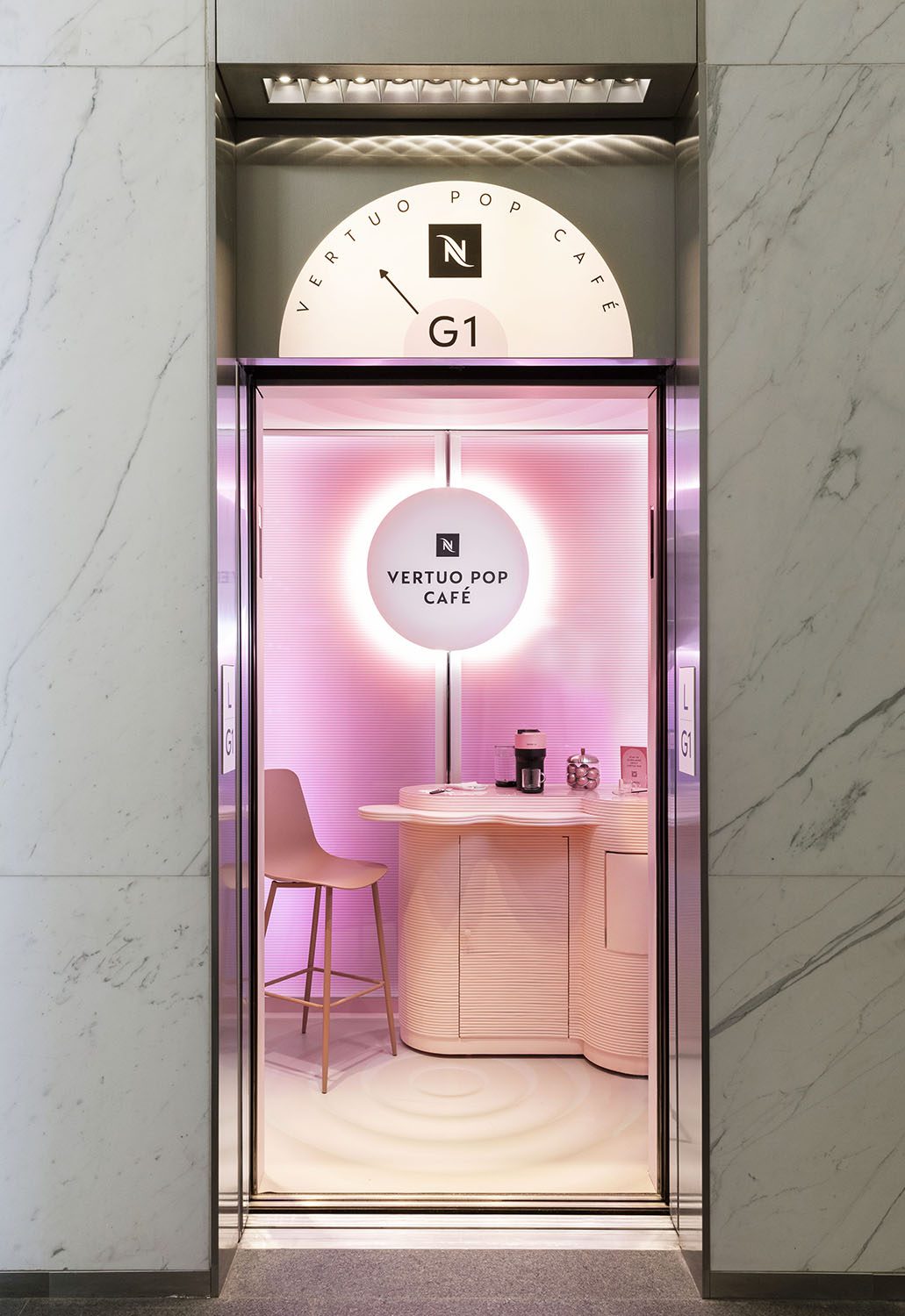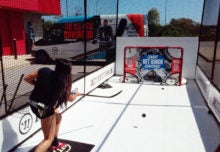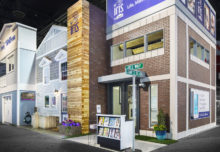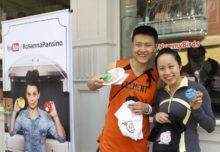“For as much back and forth as there is going over these designs and the concepts and location, I’ve always found the simpler you keep it, the better. And this was a small, immersive space that brews great coffee. As long as you keep that as your guiding principle, then the execution will fall in line.”
–Stephen Kill, Marketing Director, Nespresso USA
When Nespresso transformed an elevator at New York’s One World Trade Center into the stylish, two-person Vertuo Pop Café in March, the footprint may have been small, but the feat was not. It was the same scenario in Santa Monica in the summer of 2023, when the brand turned a gondola on the Pacific Ferris wheel into a mini coffee shop. Indeed, creating a micro-experience is harder than it looks, from scouting out suitable locations to the logistical challenges of having limited space. So we tapped Stephen Kill, marketing director at Nespresso USA, for tips and insights on creating mini activations that pack a big punch. (Agencies–New York activation: nmbl; Invisible North)
 More Tips on Building a Micro-experience:
More Tips on Building a Micro-experience:
- How Nespresso Turned a New York City Elevator into a Mini Café
- Hilton on the Green: How Golf Fans Watched the Pros Tee Off from the Comfort of a Pop-up Hotel Room
Securing the right location takes time.

Nespresso’s stylish elevator cafe was designed in partnership with editors from Architectural Digest.
You might think it’s easier to lock down a location for a micro-experience than a full-blown activation, but Kill says finding the right space is more challenging than it sounds. Ultimately, by selecting an elevator at One World Trade Center, Nespresso had the benefit of not only activating inside a secure building, but reaching the right crowd.
“We had initially planned to roll out a bunch of [Vertuo Pop Cafés]. We kind of pulled back a bit to land this one and do it right,” he says. “This one, because it’s a secure building, you’re getting commuters and you’re getting people in media, which is important [because] you have them sharing this stuff.”
Partnerships matter.
Nespresso’s partnerships with One World Trade Center and Condé Nast-owned publication Architectural Digest were fundamental to the success of the Vertuo Pop Café. In the case of the Trade Center, the brand worked with the building’s operations team to tailor the experience.
“They were great to work with, even in terms of being able to control the elevator doors opening, et cetera,” Kill says. “So we were able to really customize the experience. We weren’t totally at the mercy of their everyday operations.”
And working with editors from Architectural Digest was critical to nailing the café’s elevated look, as well as driving awareness of Nespresso’s Vertuo line of coffee machines among the publication’s sophisticated audience.
“If we’re trying to drive consideration, we need the reach as well,” says Kill. “The partnership with Architectural Digest was really important because that’s where the reach is coming from. Of course, we’re going to get the earned coverage, but by partnering with them, leaning on their design chops to help inform the design of these things, we’re not only trying to reach new audiences, but we’re reaching a more premium audience, if you will.”
There may be structural limitations.
Depending on where a micro-experience is located, there may be structural obstacles to consider. In an elevator, for instance, there are safety protocols that can’t be altered.
“Within the elevator, we couldn’t mount anything. It needed to be freestanding, so we couldn’t change anything structurally,” Kill says. “And you’re also dealing with safety challenges, right? You have the escape hatch above, you have safety messages on the screen in there that you can’t change or manipulate.”
Consider the logistics from every angle.
Nespresso had to consider every nitty-gritty logistical detail to make the Vertuo Pop Café feel like a real coffee shop, from restocking supplies like water and milk, to keeping them hidden within the activation, to slowing down the elevator ride to ensure there was time to brew a cup of coffee and engage with passengers.
“You’re dealing with the volume of even water and milk, and where do you store that? We snuck in cubbies, and we had a milk frother tucked away that we could pull out on glides,” Kill says. “So there was some other hidden magic in there. But the thing that worked in our favor also is the [elevator] just keeps going up and down, so you can reload pretty quickly. Once two [people] jump off, you can add more supplies as necessary.”
Photo credit: Kelsey Rose
*This story was originally published in April 2024 and is updated periodically






